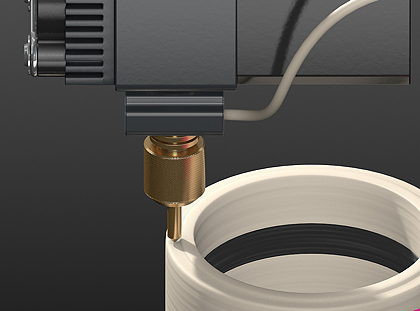- Home » News » Technology News
Pioneering process ‘prints’ sensors into plastic parts

The German engineering plastics specialist igus claims to be the first company that can integrate sensors into plastics components to help predict the need for maintenance and avoid downtime. The company’s engineers have combined additive manufacturing and Industry 4.0 technologies into a single production step that allows sensors to be incorporated into components such as polymer bearings using multi-material 3D printing techniques.
“Our intelligent 3D printed bearing marks a real breakthrough, meaning maintenance needs can be predicted and overloads avoided,” says igus’ UK managing director, Matthew Aldridge. “Long before any failure, the intelligent 3D printed component signals that a replacement will soon be required. It can also detect an imminent overload and prevent any further damage to the bearing and system.”
igus has been producing “smart” wear-resistant parts for energy chains, plain bearings and linear guides since 2016. However, before this latest development, the sensing capabilities has to be added to items such as plain bearings in a second step. This proved complex and costly.
Using the new process, wear-resistant parts with built-in sensing capabilities can be produced in as little as five days, without needing a second step. The sensing layer is applied to parts of the component that will be subjected to loads using a specially developed, electrically conductive material that bonds well with the tribo-filament materials.

Currently, there are two ways of using the technology:
• If the conductive material is located between layers prone to wear, it can warn of any overloads. If the load changes, the electrical resistance also changes. This allows a machine to be stopped before further damage occurs. To determine the load limits, the bearing must be calibrated correctly.
• If a conductive track is embedded into a sliding surface, the wear can be measured via the change in resistance. This can be used to predict the need for maintenance, again avoiding downtime.





